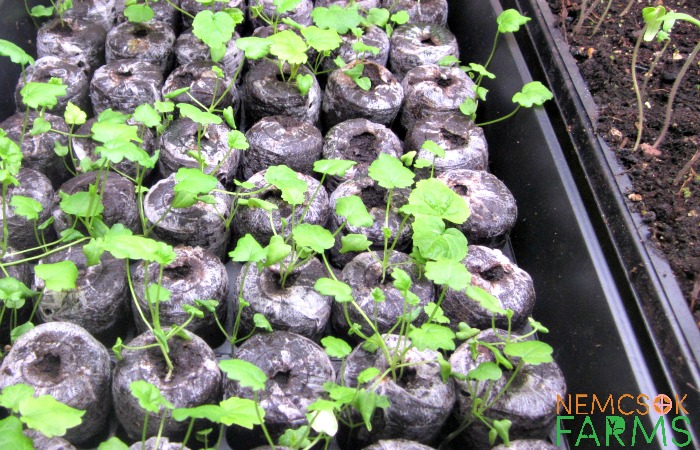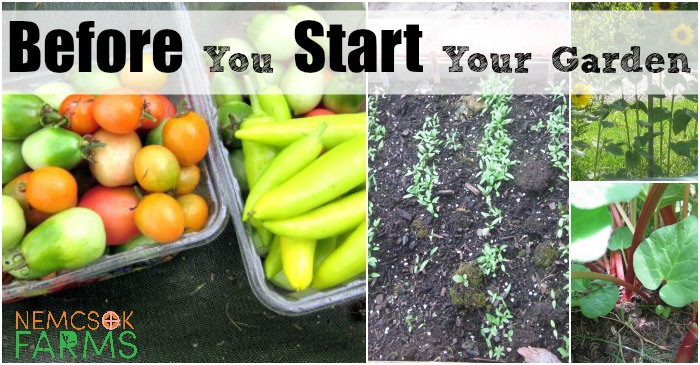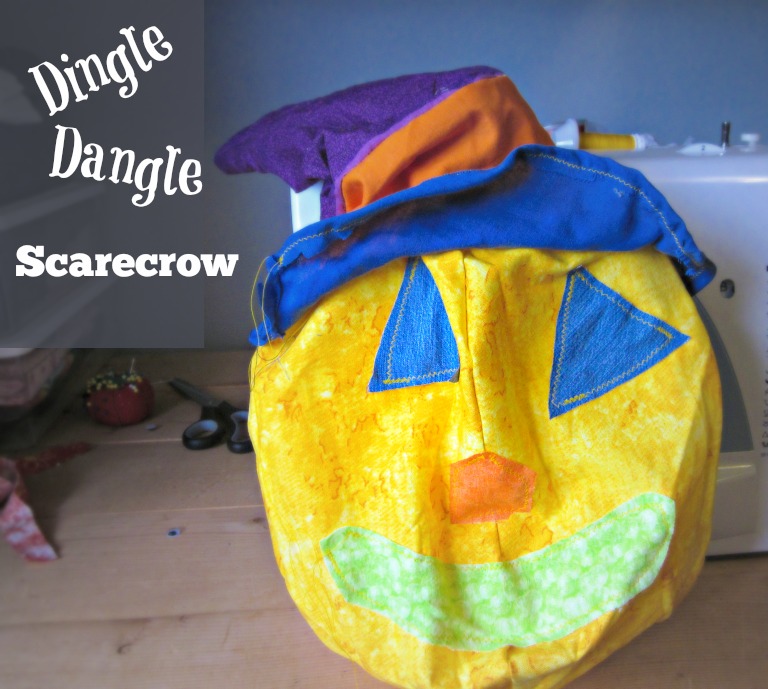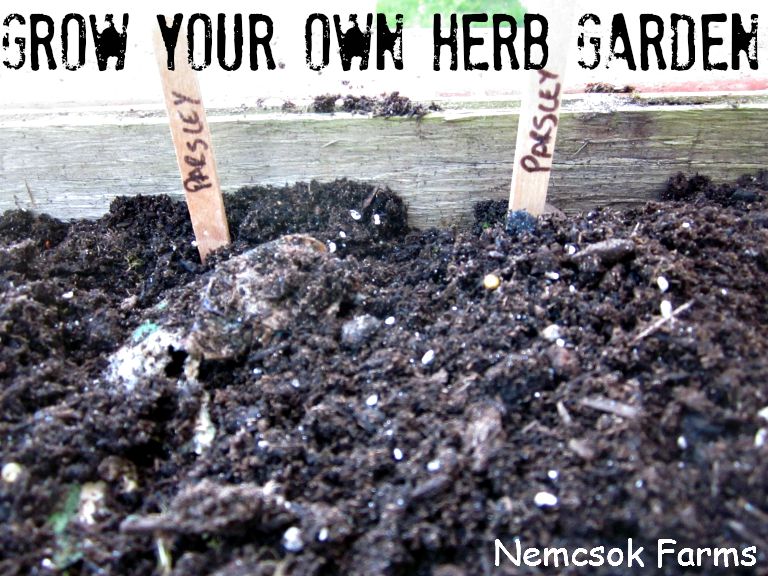Before you dive headlong into the seed stores and dig right into the compost you’ve been saving – consider these key points if you’re just getting started with gardening and have high hopes to grow a garden at home.
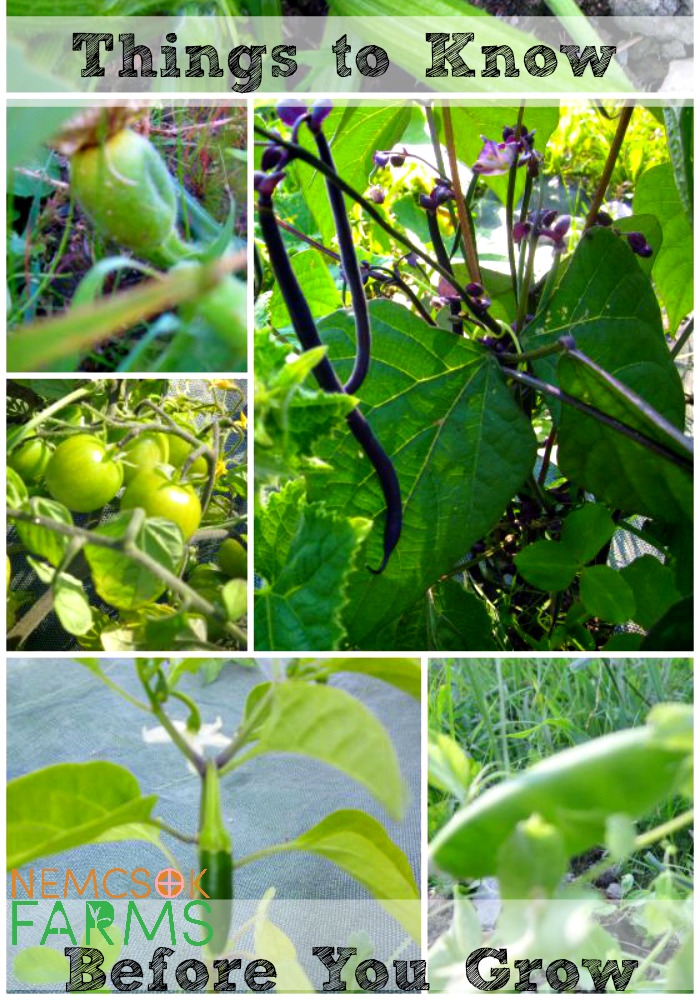
Things to Consider, before You Grow a Garden
How does your soil measure up?
Get a soil sample. For real. It’s super easy to do, and can be analyzed for a small fee, or even free in many agricultural labs. Knowing what is in your soil before you plant, can save you heaps of money and time and disappointment.
Take into account the tilth, and texture of your soil as well as the fertility. A soft, sandy soil is excellent for carrots and potatoes, where a firmer, nutrient rich soil is helpful when trying to grow strong tomato and pepper plants.
Once you know what is in your soil, and what you are going to grow – decide what you need to add as fertilizer and budget and plan accordingly. Fertilizer can be really expensive – but if you can make your own, you get the satisfaction of doing it yourself, plus you can save lots of money.
Head to the OMAFRA website for Soil Sampling and Analysis for Managing Crop Nutrients.
Also, you can find a list of accredited soil testing labs in Ontario from the OMAFRA website.
Not in Ontario? Contact your own Provincial or State Ministry of Agriculture, Food and Rural Affairs equivalent.
How much room do you have?
A vegetable garden can be as big, or as small, as you want. If you have a big yard, farm, or acreage, decide where you want to make your garden, and tada! That was easy. Allow about 18″ between rows, and if you are growing squash, give yourself a good six feet between hills if you can afford the space. If space is limited, you may want to consider growing up, instead of out.
if space is at a premium, you can use container gardens stacked and tiered to maximize space, and you can also convince a lot of plants to grow along trellises and such. Make sure you’re not shading the ‘ground’ plants with the climbing plants.
How will you keep the pests out and the pollinators in?
If you are investing a lot of time, money and energy into your garden, it is totally worth the added work, of installing some sort of fencing (solar powered electric is best if you can swing it) to keep the critters out. Typically, if you will eat it, so will a lot of animals. Living trapping and re-locating problem critters if very effective also, put please pay attention to where you release them. Don’t bring your trouble to someone else’s garden.
What can you plant together, and what must you keep apart?
I am not an expert on companion planting, but there are a couple of articles out there on the benefits and the dos and don’t of companion planting. Like most relationships, some work, some don’t.
There are some pretty good articles worth reading over at www.growveg.com and here is one specifically on Companion Planting (Click here to Follow)
What are you going to do with your surplus, or deficit?
One more thing to add to your ‘to-do’ list, is to have a plan for the produce. It is entirely possible that you will end up with so much produce that you will find yourself canning, freezing and batch cooking well into the fall. Check back here often for various recipes and tips on preserving like what to do when the tomatoes are ripe.
And the reverse is also possible – gardening disasters can happen. Think about starting a gardening support group with your friend and family. Seriously. You can share in each other’s successes, and help out with weeding and planting and harvesting. (And then of course, sharing )
Don’t miss the FREE gardening planner to help make your plan a reality. Let me know how it turns out!

